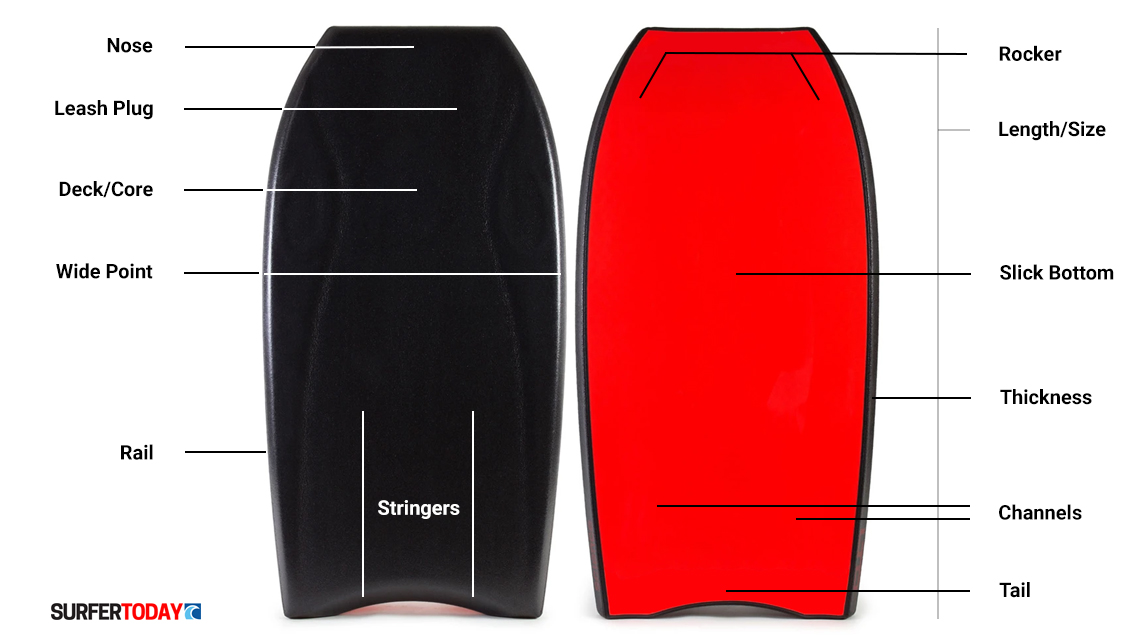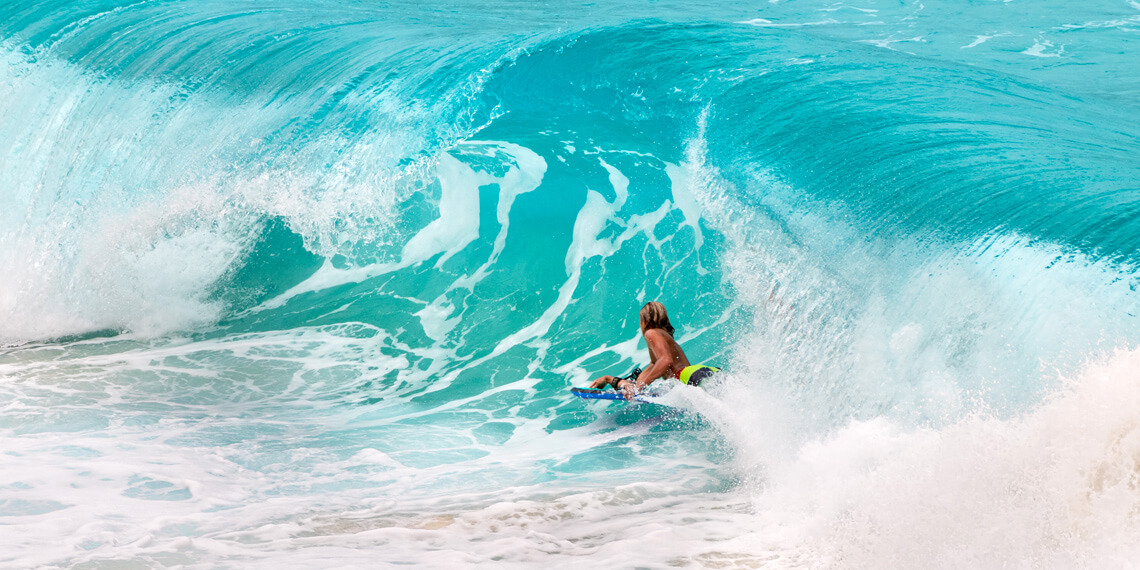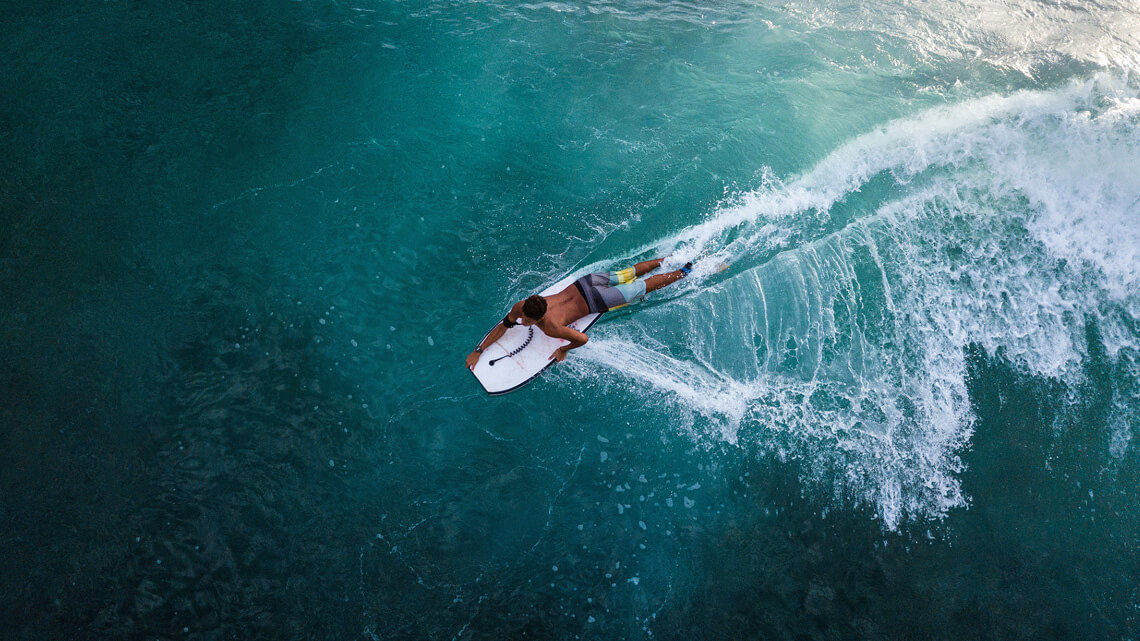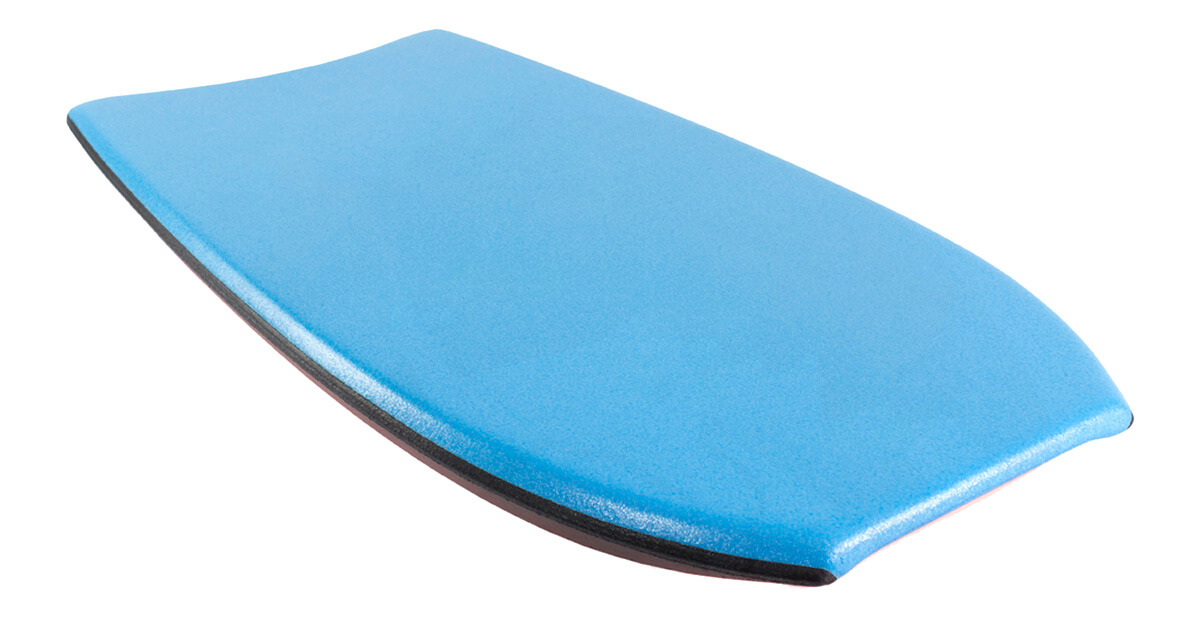You have finally decided to buy yourself a new or your first bodyboard. But what size bodyboard should you buy? And which type of bodyboard suits your needs?
You'll have to choose a boogie board that matches three critical variables: your weight, height, and experience in the sport.
Check the following table to get the ideal paddling/flotation ratio for your body measurements.
You'll notice that some sizes have overlapping weight ranges. Depending on the ocean conditions - and the rider skills - you might need different gear.
To convert kilograms (kg) to pounds (lb), note that 1 kilogram equals 2.2 pounds. To convert meters (m) to feet (ft), note that 1 meter equals 3.3 feet.
The main bodyboard features are height, width, core material, nose, tail, stringer, and leash plug.
Take a look at the bodyboard size chart:
Bodyboard Length
(inches)
< 30''
30''
32''
34''
36''
37''
37.5''
38''
38.5''
39''
39.5''
40''
40.5''
41''
41.5''
42''
42.5''
43''
43.5''
44''
45''
> 46''
Rider Height
(cm)
60-99
100-130
110-140
115-145
120-150
123-153
130-155
135-155
137-158
140-162
147-165
157-167
158-170
160-173
165-179
168-183
170-187
172-190
175-190
175-195
185-200
190-220
Rider Weight
(kg)
13-20
25-25
20-30
25-35
30-45
35-50
35-55
35-58
38-58
40-60
42-65
42-72
50-80
55-85
60-90
65-95
70-100
70-105
75-130
75-130
80-135
85-145
Find the best bodyboards in the world.
How to Choose the Right Bodyboard?
Board Length
As a general rule of thumb, the board should reach up to about your belly button when stood on the floor.
Generally speaking, make your selection based on the following general guidelines and suggestions:
1. Get a bigger board than the one indicated by the size chart if the majority of waves you catch are small, mushy, and slow-breaking waves;
2. Buy a bigger board than the one indicated by the size chart if the majority of waves you catch are big, powerful steep, hollow, and fast waves;
3. If you're into drop-knee or stand-up bodyboarding, get a slightly bigger board;
Ideally, your quiver should accommodate a normal-sized bodyboard for average-sized waves and a smaller boogie board for the big days.
After carefully selecting the right size, it's paramount to understand the main features of a bodyboard.

Board Core
Today, bodyboards are made of three main core materials: dow polyethylene foam (PE), polypropylene foam (PP), and extruded polystyrene (EPS).
Dow polypropylene-based bodyboards offer excellent flexibility and projection and solid all-around performance in cold water conditions.
Warm waters will slightly soften a PE bodyboard and increase its flex.
The inclusion of a stringer in a dow core results in a board with excellent flex properties and good memory, i.e., the ability to return to its original shape.
Polypropylene-based bodyboards are lighter and stiffer than their PE counterparts.
However, when equipped with stringers, PP boogie boards might become too stiff for many bodyboarders when the water is cold.
Extruded polystyrene-based bodyboards feature the cheapest and simplest core and are normally found in entry-level models.
EPS boards are incredibly light, water-resistant, stiff, and lack foam memory and full recoil. Actually, they might crease in extreme surfing conditions.
Heavier riders should opt for stronger and stiffer cores equipped with at least one stringer.

Stringers
Stringers have been added to modern bodyboards to increase the strength of the core.
They run down through the middle of the board, like a spine, and provide near-instant recoil and increasing projection.
Boards with stringers will generally last longer than those without them. High-performance drop-knee boards may run two or three stringers to add increased strength in the areas the rider needs it most.
Nevertheless, professional prone bodyboards marketed are already being sold with multiple stringers for riders who enjoy warm water waves and need robust designs for their heavy landings.
Stringers can be removed or installed, depending on the wave riding conditions on offer.
Tails, Width and Thickness
Bodyboard tails are the last exit point for water leaving the bottom of the board. The "crescent" and "bat" shapes are the most common in modern bodyboards. Crescent-type tails stick the board to the wave, while bat-type tails are looser.
Width is also a relevant feature in the performance of bodyboards. Wider boards have higher buoyancy and are more difficult to turn. Modern models are narrower to allow for high-performance maneuvers and speed turns.
Thickness is also a critical variable in bodyboards.
The latest models have become slimmer - around 51 millimeters - to increase maneuverability and response to quick movements.
Read more about choosing your bodyboard.

Learn how to shape a bodyboard. Read how to apply a GoPro bodyboard mount. And here's how to install a bodyboard leash plug.
